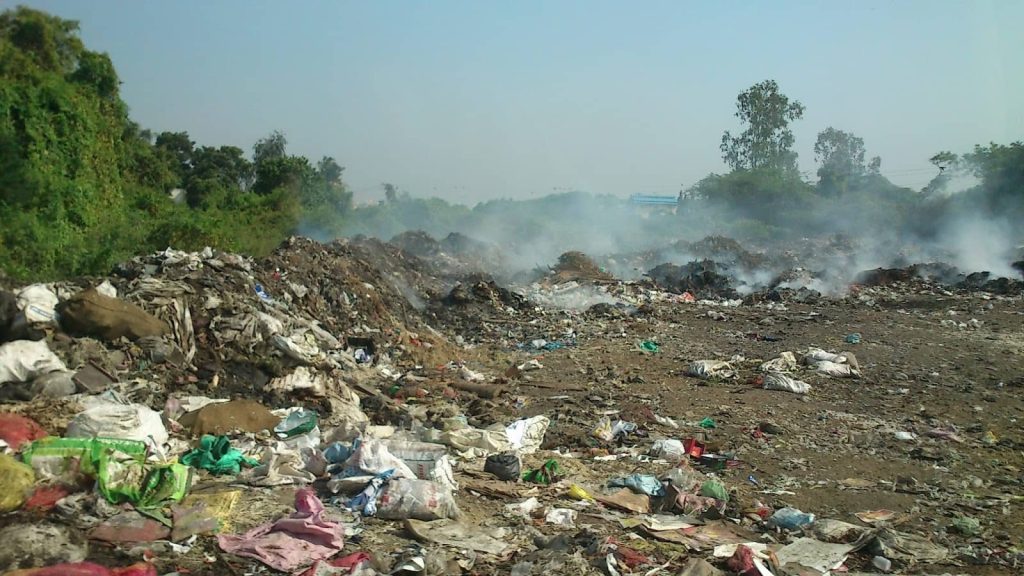
Soil Pollution
Soil is a vital natural resource that supports plant life and sustains ecosystems, making it an irreplaceable part of the environment. Soil pollution occurs when harmful substances, biological organisms, or energy enter the soil, degrading its quality and potentially affecting its ability to support normal functions, agricultural productivity, and public health. Pollution of soil can come from various sources, and it has far-reaching consequences on the environment and food security.
Causes of Soil Pollution
- Erosion: Soil erosion is the movement of the surface layer of soil from one location to another, often accelerated by human activities like farming, deforestation, overgrazing, and construction. Natural causes include wind and flowing water. Erosion leads to the loss of fertile topsoil and disrupts the land’s ability to support plant growth.
- Accidental Spillage of Contaminants: Soil contamination can result from the accidental spillage of pollutants. These spills can happen during the transportation of hazardous materials, including chemicals and fuels. If pollutants are not cleaned up promptly, they can penetrate the soil and cause long-term damage.
- Chemical Leaching: Pollutants from the surface can be washed away by rainfall, but this often causes the contaminants to accumulate elsewhere in the environment, potentially affecting water sources and increasing pollution in other areas. In some cases, volatile pollutants may evaporate, causing air pollution.
- Excessive Use of Fertilizers and Pesticides: The overuse of chemical fertilizers and pesticides in agriculture leads to contamination of the soil. These chemicals are water-soluble, and when applied to fields, lawns, and gardens, they can infiltrate the soil and eventually reach groundwater. Nitrates and phosphates in fertilizers are particularly problematic, contributing to soil degradation and affecting plant and animal life.
- Excessive Irrigation: Over-irrigation can lead to waterlogging and the salinization of soil, which disrupts soil fertility and reduces agricultural productivity. The imbalance of water levels in the soil affects crop growth and leads to long-term soil health issues.
Effects of Soil Pollution
- Food Shortage: Loss of fertile topsoil due to soil pollution, erosion, and contamination reduces agricultural productivity, leading to food shortages. This is especially critical as global populations continue to grow.
- Desertification: Continuous exposure of eroded soil to the sun causes the land to lose its fertility and become sandy or rocky. This process is called desertification, which renders the soil unsuitable for agriculture.
- Reduction in Agricultural Land: As soil becomes polluted, it becomes less capable of supporting agriculture, leading to a decrease in the amount of land available for farming.
- Water Pollution: When topsoil is washed away, it can clog lakes and rivers, increasing the turbidity of water and harming aquatic life. The contamination of soil contributes to the degradation of water quality and aquatic ecosystems.
- Soil Salinization: Excessive irrigation leads to an accumulation of salts in the soil, a process known as soil salinization. This renders the soil less fertile and reduces its ability to support plant growth.
- Eutrophication: The runoff of fertilizers from agricultural land into waterways leads to eutrophication, where excessive nutrients cause algae blooms. These blooms deplete oxygen in the water and harm aquatic life.
Control Measures for Soil Pollution
- Soil Conservation: Implementing soil conservation practices such as contour plowing, terracing, and planting cover crops can minimize soil erosion and the loss of fertile topsoil.
- Integrated Nutrient Management (INM) and Integrated Pest Management (IPM): Using a combination of organic and inorganic fertilizers (INM) and reducing the use of chemical pesticides (IPM) can reduce the dependency on harmful chemicals and improve soil health.
- Water Management Practices: Proper water management practices in agriculture, including the use of efficient irrigation techniques, can prevent over-irrigation, waterlogging, and soil salinization.
- Covering Soil with Crop Residues: Keeping the soil surface covered with crop residues or planting ground cover crops helps protect the soil from erosion, improves water retention, and enhances soil fertility.
- Afforestation and Shelter Belts: Planting trees as part of afforestation programs or establishing shelter belts and windbreaks can protect the soil from wind erosion and improve soil quality.
- Cleaning Polluted Soil: Cleaning up polluted soil through techniques like bioremediation, phytoremediation, and the removal of contaminants can restore soil health and prevent further degradation.

